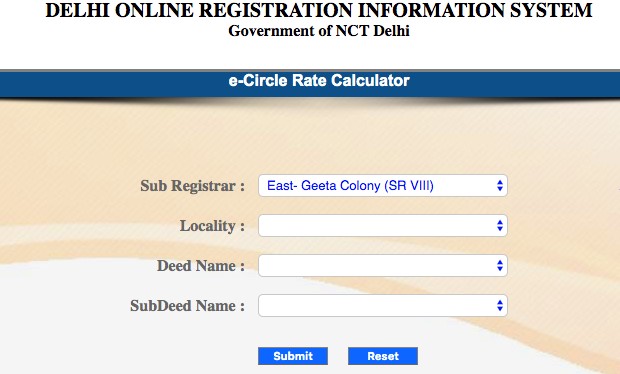Buying property has been a dream for many. When some are able to bless with lands in their name, some still struggle to buy their first plot or a piece of land. In such cases, where you think you might be struggling to know the nitty-gritty’s of buying a land in your neighborhood or otherwise, here is the basic of where you should start from.
Starting with the Circle Rate, buyers need to have this first step clear in mind that will take you a one step closer to your dream land.
Let’s Know More About Circle Rate!
The government sets a minimum rate to buy property in Delhi that act as a determined rate of land and property. It acts as a minimum amount to be paid while buying a property without which it cannot be sold. As per the periodic changes, the rates are decided and tweaked according to various districts administrations in India to keep them close to the prevalent market rate of properties.
Delhi Circle Rate
Delhi circle rate is the minimum rate that a person has to pay while buying a property. This depends upon the area and can vary according to that.
Delhi Circle Rate Notification 2021
Delhi circle rates are chosen by the union territory government. The Delhi government, in February 2021, declared a 20% cut in circle rate across all types of properties – properties in the capital region are partitioned into eight classifications – to make land more reasonable. The 20% rebate in Delhi circle rates was material till December 31, 2021.
| Area | DDA, society flats (per sq meter) | Private builder flats (per sq meter) | Multiplying factors for private colonies |
| Up to 30 sq meters | Rs 50,400 | Rs 55,400 | 1.1 |
| 30-50 sq meters | Rs 54,480 | Rs 62,652 | 1.15 |
| 50-100 sq meters | Rs 66,240 | Rs 79,488 | 1.2 |
| More than 100 sq meters | Rs 76,200 | Rs 95,250 | 1.25 |
| Multi-story apartment | Rs 87,840 | Rs 1.1 lakhs | 1.25 |
Delhi Circle Rate for Commercial and Residential: As per 2022
| Category | Land cost (per sq meter) | Construction cost: Residential (per sq meter) | Construction cost: Commercial (per sq meter) |
| A | Rs 7.74 lakhs | Rs 21,960 | Rs 25,200 |
| B | Rs 2.46 lakhs | Rs 17,400 | Rs 19,920 |
| C | Rs 1.6 lakhs | Rs 13,920 | Rs 15,960 |
| D | Rs 1.28 lakhs | Rs 11,160 | Rs 12,840 |
| E | Rs 70,080 | Rs 9,360 | Rs 10,800 |
| F | Rs 56,640 | Rs 8,220 | Rs 9,480 |
| G | Rs 46,200 | Rs 6,960 | Rs 8,040 |
| H | Rs 23,280 | Rs 3,480 | Rs 3,960 |
Delhi Circle Rate for Agricultural Lands: As per 2022
| District | Green belt villages (in Rs crore per acre) | Urbanized villages (in Rs crore per acre) | Rural villages (in Rs crore per acre) |
| South | 5 | 5 | 5 |
| North | 3 | 3 | 3 |
| West | 3 | 3 | 3 |
| North-west | 3 | 3 | 3 |
| South-west | 3 | 4 | 3 |
| New Delhi | 5 | 5 | 5 |
| Central | NA | 2.5 | 2.5 |
| South-east | NA | 4 | 2.5 |
| Shahdara | 2.3 | 2.3 | 2.3 |
| North-east | NA | 2.3 | 2.3 |
| East | NA | 2.3 | 2.3 |
Factors that Affect Circle Rate in Delhi
Property circle rates in Delhi rely upon various elements, for example,
- Offices nearby: The more the offices, the higher the circle rate in Delhi.
- Market worth of the region: The higher the market value, the higher the circle rate in Delhi.
- Category type of the area: Circle rate increases of the properties in well-designed and posh areas of Delhi as compared to the rates in different regions.
- Type of property: While circle rates are lower for private properties in Delhi, they are similarly higher for business properties.
To facilitate the cycle and keep it uniform across the city, the Delhi government has divided the properties in Delhi into eight classes – A to H. Delhi’s most costly elegant regions are in Category some time Category H has the least worth region of the city. Let us late a look at some examples.
How Can One Figure Out Circle Rates in Delhi?
Property buyers and financial investors ought to realize that the property enlistment process in Delhi and charges like stamp duty, depend on the higher of the announced property estimation and the cost determined according to circle rate appropriate for the area or area of Delhi.
Typically, business properties have higher circle rates, when contrasted with private properties. It might likewise shift, in light of the attributes and age of the property. Properties developed after the year 2000 have a multiplier of 1 while the more seasoned structures that were built before that have it in the scope of 0.5-0.9.
You can work out the circle rates in Delhi by visiting the Delhi government’s website-based enlistment data framework.
On the other hand, you can follow the under given steps to calculate the circle rate in Delhi.
Stage 1: Select whether the property is utilized for private or business reason.
Stage 2: Consider the type of property – whether it is a flat, apartment, independent house, or a plot of land. The circle paces of various property types fluctuate, regardless of whether they fall in a similar region.
Stage 3: Factor in the ‘age multiplier’ to define the property valuation and decide the circle rate appropriately.

How to calculate property estimation in Delhi utilizing circle rate?
This is the way to ascertain the property estimation, utilizing the circle rate:
Find out the property’s developed region, plot region, period of development, amenities, floors, and so forth.
- Pick the sort of property (private or business unit, plot, house, condo, or shop, etc).
- Select the region of the property
- Calculate the base evaluation figure according to the circle rates given
- The formula for computing the property estimation is as given underneath:
Property estimation = Area built-up (in sq. meters) x circle rate for the territory (in Rs per sq. meter).
Update on October 12, 2021: In a decision that would bring Delhi circle rate of properties near their market rates, the union territory government has chosen to set up a framework, under which it would sub-classify the current eight classifications of properties in the public capital. Properties in Delhi are partitioned into eight general classifications from A to H, for circle rate to be calculated.
Circle rates in ‘A’ classification regions approach Rs 7.74 lakhs per sq. meter. Circle rates applicable to the least developed ‘H’ class, are pretty much as low as Rs 23,280 for each sq. meter. The authority presently plans to embed 32 sub-classifications inside the eight general classifications. The rationale behind the choice to send off sub-classifications is that territories inside one class have various degrees of physical and social measures. This is valid for every type, since every area is spread across enormous plots of land. This is the reason assessing all territories inside one region under a board classification isn’t fair.
To assess regions in a place where everything is equal and to decide circle rates in view of the degree of offices a particular area falls, an assessment board was set up by the Delhi government’s Revenue Department. The board prescribed those four to five sub-classifications inside the eight classes to be made, to resolve the issue.
The suggestions of the panel board are currently being inspected by a pastoral board, following which it would be shipped off the state government for endorsement. Changes in circle rate classes will be executed only after it gets a heads-up from the Delhi Lieutenant Governor.
Whenever executed, the adjustment of circle rate in Delhi will increase of properties in numerous areas, bringing about appreciation for land owners. The move will likewise assist the Delhi government with gathering higher revenues as stamp duty collection on property rates.




